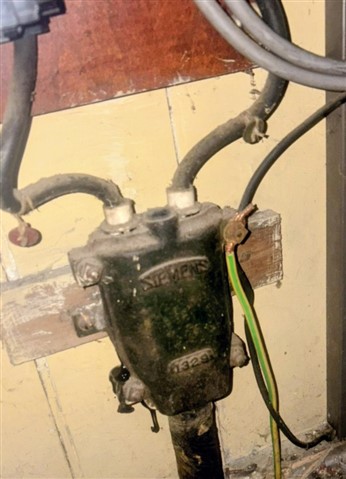
Can anyone advise me on what type of earthing system this is.
My opinion is, is that it isn't.
,no ROD, no PME and not taken from the Armour of the incoming cable.
Thanks

Can anyone advise me on what type of earthing system this is.
My opinion is, is that it isn't.
,no ROD, no PME and not taken from the Armour of the incoming cable.
Thanks
Depends - are those black wires also earth connections or just something unrelated ? (black was earth pre WW2 back when green was 3rd phase, before it became earth)It is pretty dated - probably 1930s, so be careful also that any matching era fuse holders may contain asbestos.
What is the measured Zs ?
It could be TNS or originally supposed to be water main TT, not permitted since 1960 something.
Is there any evidence of something having been around the cable jacket originally - of that era it could be quite weedy and soldered ('sweated' to the lead). Nowadays a spring connector that combines the spring of a clock with the laceration ability of a corned beef can is the preferred, but the DNO should sanction adding anything like that to their cable first if its not already there under the grot.
If you are in an area with a progressive DNO with records, they may be able to tell you what their policy is on metal cut-outs and may just replace it as a precaution- some will change on sight, others wait to see a fault first.
Other DNOs are not interested and will recommend you add an RCD and convert to TT with rod electrode.
regards Mike.
What is the measured Zs ?
That alone may demonstrate that it is not adequate.
What is the size of the G/Y? Is that adequate.
How many fuses are in that service head?
What is the measured Zs ?
That alone may demonstrate that it is not adequate.
What is the size of the G/Y? Is that adequate.
How many fuses are in that service head?
We're about to take you to the IET registration website. Don't worry though, you'll be sent straight back to the community after completing the registration.
Continue to the IET registration site